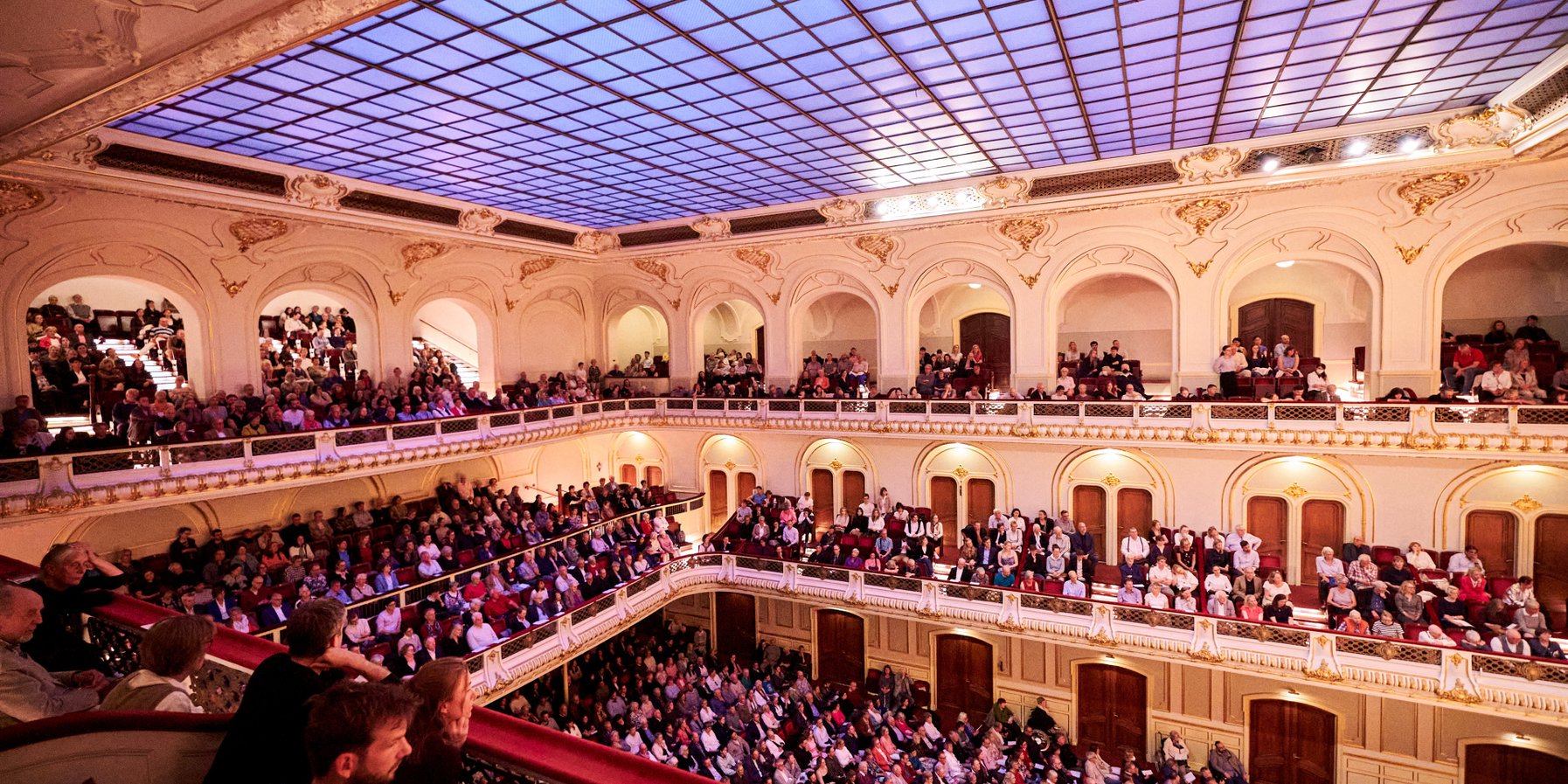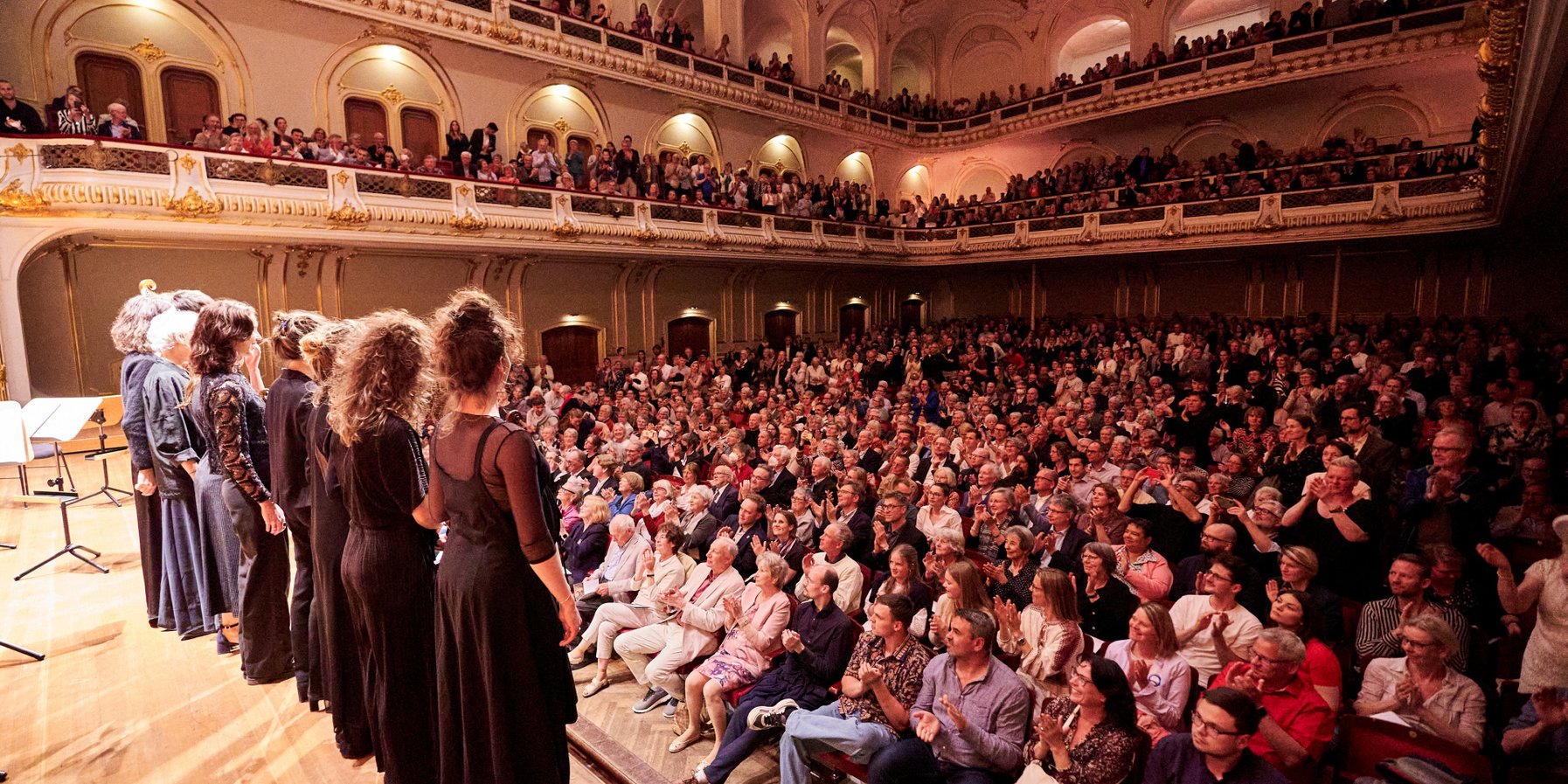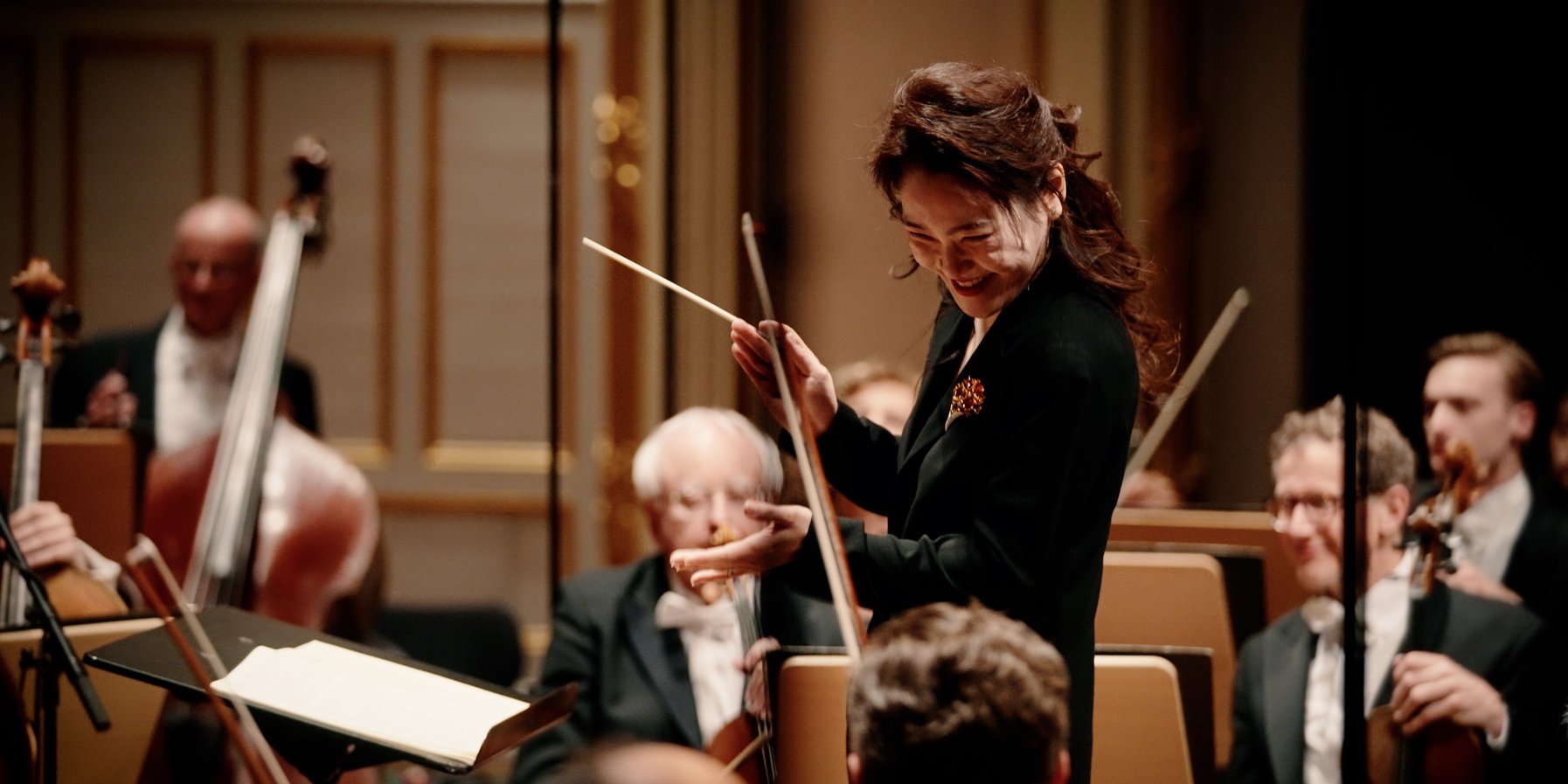
The Laeiszhalle
A musical highlight in Hamburg: having first opened its doors in 1908, the Laeiszhalle still regularly welcomes the great stars of the music world
Programme & TicketsA DISTINGUISHED INSTITUTION
When it comes to music, the Laeiszhalle was the first port of call in Hamburg for more than 100 years. The concert hall was opened in 1908 and has a proud history of guest performances by composers such as Richard Strauss, Sergei Prokofiev, Igor Stravinsky and Paul Hindemith, all of whom conducted their own works here. Audiences also enjoyed epoch-making performances by emerging global stars such as a 12-year-old Yehudi Menuhin and a young Vladimir Horowitz, and later by legends such as Maria Callas.
Although the Elbphilharmonie opened in 2017, the Laeiszhalle Grand Hall remains one of Europe’s best philharmonic concert halls. The Symphoniker Hamburg regularly give concerts here as the resident orchestra, and a number of other regional orchestras, choirs and promoters use the hall. World-class pianists such as Grigory Sokolov and Martha Argerich, and singers such as Cecilia Bartoli and Jonas Kaufmann have said that they love the hall and its excellent acoustics.
The Elbphilharmonie and the Laeiszhalle operate under one general director.
Want to discover the hidden corners of the Laeiszhalle? Tour the concert hall online in entertaining videos.
HARD TO SPELL, EASY TO SAY: It’s Laeisz like »ice«
The concert hall is named after the Hamburg shipowner Carl Heinrich Laeisz (1828–1901). In his will, he decreed that his company F. Laeisz would donate 1.2 million marks to build »a magnificent venue for the performance and enjoyment of fine, serious music«.
His widow Sophie Christine Laeisz raised the figure to 2 million marks and, as the developer, conducted the negotiations with the city authorities. The Laeiszhalle was designed in a neo-Baroque style by the architects Martin Haller and Emil Meerwein, who had previously made a name for themselves with the construction of Hamburg City Hall.

CAREER START FOR A RADIO DJ
The Laeiszhalle miraculously survived the Second World War unscathed. The British occupying forces temporarily used the building as the Broadcasting House for their military radio station British Forces Network. Chris Howland – who became one of the early NDR presenter legends because of his charm and wonderful English accent when speaking German – started his career as a radio DJ here. Besides all things classical, the music hall also became home to beat, rock, pop and jazz over the following decades.
Beekeepers climbing around on the roof of the Laeiszhalle and a singer crashing onto the stage on a fully fuelled Harley Davidson: the venerable concert hall has these and many more curious stories to offer.
Halls and Spaces at the Laeiszhalle

The Grand Hall
The Laeiszhalle Grand Hall has a capacity of 2,000 seats. With its unique glass ceiling and magnificent neo-Baroque interior, it is famous not only for its excellent acoustics, but also for its architecture and ambience. Built into the rear wall of the stage is an organ that was installed by the Beckerath company in 1951. This organ was sold in 2021 and will be replaced in 2023 by a new, more sonorous reconstruction of the original 1908 organ, built by the Walcker company.

The Recital Hall
The Laeiszhalle Recital Hall is the perfect venue for chamber music, song recitals, children’s concerts and jazz events. After the Second World War it was used for a time as a dance hall, before later being refurbished. In 2009 it was lovingly restored to how it was in 1954. Today, it is one of the few concert halls still boasting authentic 1950s design. It has a capacity of 640 seats.

Studio E
Studio E is a charming little stage with natural daylight and slightly ascending stalls with an encircling balustrade. The room is terraced and offers seating for an audience of 150.

Brahms Foyer
The Brahms Foyer takes its name from the symbolist marble sculpture of Johannes Brahms, which the Leipzig artist Max Klinger created for the Laeiszhalle in 1909. The festive foyer on the first floor is perfect for chamber music concerts, receptions, and film and photo shoots. It is also the culinary centre of the Laeiszhalle.

The Organ
In the Grand Hall you can still see the original organ facade – that is to say, the external shell – of the Walcker organ of 1908. That organ was replaced in the 1950s by an instrument made by the renowned organ builder Rudolf von Beckerath. The Beckerath organ was sold in 2021 to a Bavarian church and will be replaced until 2026 by a reconstruction of the original 1908 organ. The listed organ facade will remain unchanged.
Vintage charme, fit for the future
The Laeiszhalle is extensively modernised over several years during the summer season breaks. The hall is to be made fit for the future in terms of its special, heritage-protected quality and the good acoustics in the Grand and Recital Halls to a high standard in terms of building and event technology. Many measures are rather inconspicuous for the audience, but all the more important for the musicians and technicians: in 2024, fire protection measures were carried out in the Grand Hall, the dressing rooms for the artists will be improved, new lighting technology will be installed on the stage and the ventilation will be optimised. As part of the renovation of the organ in the Great Hall, the original wooden back wall of the stage will be restored.
Saved Events
Login required. If you do not have an Elbphilharmonie customer account, registering is quick and easy.






















